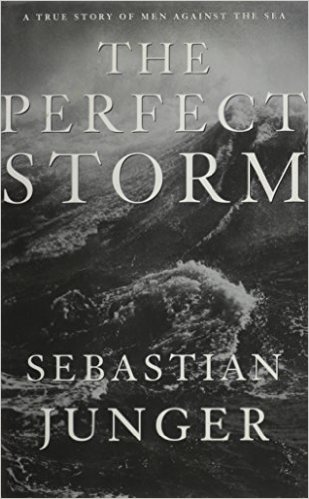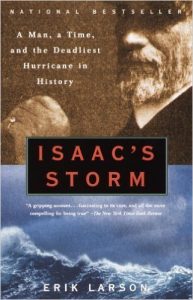A fellow author, who is about to embark on her own first narrative nonfiction book, recently asked me about the storytelling process I used for my book, Devastation on the Delaware: Stories and Images of the Deadly Flood of 1955. “You nailed it!” she wrote, and wondered how she could have confidence of doing the same.
 Of course I was flattered by the compliment, but I must admit, it was my first foray into narrative nonfiction, too, and I was none too confident myself before I began. But I know I’m a decent writer, and I knew I had a whopper of a good story to tell. In my mind, it was mine to screw up, and I’d have had to work pretty hard to do that. So I was surprisingly uncowed by the challenge.
Of course I was flattered by the compliment, but I must admit, it was my first foray into narrative nonfiction, too, and I was none too confident myself before I began. But I know I’m a decent writer, and I knew I had a whopper of a good story to tell. In my mind, it was mine to screw up, and I’d have had to work pretty hard to do that. So I was surprisingly uncowed by the challenge.
As I tell people now, if I’d known how the project was going to eat my life for the next three years, I’d never even have started…so I’m glad I didn’t know, since that book changed my life in so many ways, all of them good. And one of them was coming to understand that the way I chose to approach the writing was spot on. In the ten years since the book came out, I’ve had exactly one person take issue with the way I chose to write it (you can find his comments in an Amazon review). And given that the book has sold in excess of 6,500 copies, that’s a ratio I can live with.
So, in the interest of believing that there are other writers out there who may be struggling with how to get started on their own narrative nonfiction projects, I’m sharing here my reply to my friend’s inquiry. Not that my way is the One Right Way (I don’t believe there is such a thing for any given effort), but I hope that perhaps knowing how I approached a narrative nonfiction book that has become a success will help you plan for your own successful new book. You may find some fresh ideas or—dare I hope?—nuggets of wisdom, or maybe just a different way of thinking about something that can help you move forward.
—
My writing process for “Devastation on the Delaware”
 There was no big process, really. I had recently read Sebastian Junger’s The Perfect Storm and Erik Larson’s Isaac’s Storm. I loved how they were done, and figured, why reinvent the wheel? If it works, copy it! So I did.
There was no big process, really. I had recently read Sebastian Junger’s The Perfect Storm and Erik Larson’s Isaac’s Storm. I loved how they were done, and figured, why reinvent the wheel? If it works, copy it! So I did.
I knew I needed to write it in narrative nonfiction style to keep it from becoming boring, so I knew that I’d have to find certain people — real ones — who lived through the flood and had good stories to tell, but whose experience would also represent the larger experience of the folks in their respective geographic regions, and that I’d have to write them like characters in a novel. Hence the degree of background about each one, and pre-event lead-up. Yes, it took time and space, but it was necessary. And I was always mindful of not allowing that material to become an info dump and slow down the pacing of the narrative.
As far as piecing them together to form a cohesive narrative, that part was unexpectedly easy and done for me — I simply chose people who were located at various points along the river, which was easy because I interviewed more than 100 of them. So that was Stage 1.
Then, once I had introduced them all and created their backstories, came Stage 2: I decided that the river’s natural history was such an integral part of understanding how the event unfolded, that I gave it its own chapter, the earliest one in the book after the introduction. I did the same with the cultural flavor and the meteorological and technological status of the mid-1950s, because these were also critical factors in how the response to the event unfolded. Then I proceeded to weave more of all of this in with the current situations/scenarios in which the “characters” now found themselves immediately prior to the flood.
Stage 3, though the longest haul, was actually the easiest. I just took the actual flooding event chronologically, which meant I started geographically with the northernmost point of coverage in the book, which was Port Jervis, NY/Matamoras, PA, and then followed the flood crest south along the river through Trenton, NJ. This was the perfect, literal “channel” through which to revisit the characters, who would in turn all be touched by the flood in one way or another.
I was careful at all times to keep it real and detailed enough to evoke the visceral emotions — terror, fear, confusion, excitement, etc. — without overwhelming the reader with too much information. That was critical to keep the pacing tight. My goal was to create the anti-boring historical textbook: I wanted it to read like a page-turning thriller. So one device I employed doggedly was ending each chapter on a note of impending action or doom earlier in the book, and with cliffhangers during the action part.
Probably the slowest section of the read was Part III – The Aftermath. Necessarily, the reader now sags along with the actual flood victims from post-adrenaline surge, and it was a challenge to get through all the post-flood politics, the blaming, the new anti-building in the flood plain zoning, the whole Tocks Island debacle, etc. without losing the audience. Once again, I turned to the emotional core of the story. I delved into the details of carefully chosen people whose personal experiences mirrored the larger zeitgeist of what others were going through. Again, very thoroughly considered, details carefully winnowed down to the essential, telling, emotional pith.
 And then the windup of the whole story: Again, I was blessed with the gift of Dick Albert (rest his soul) having written his Damming the Delaware book, which I could essentially summarize in a few short paragraphs and simply tell those who wanted more detail to read the book for themselves. I was hyper aware of not getting derailed (which would have been SO easy!) by these other stories, which were really large enough to deserve their own books. I was disciplined about only mentioning them enough to provide necessary context for the end of the flood event. I had to keep in the front of my mind that I was ONLY telling the story of the flood itself. I provided lots of detail in the setup so that, during the action segment, I could just blow through it like an adventure sequence, and then at the end, I could wrap it up fairly quickly without losing my reader.
And then the windup of the whole story: Again, I was blessed with the gift of Dick Albert (rest his soul) having written his Damming the Delaware book, which I could essentially summarize in a few short paragraphs and simply tell those who wanted more detail to read the book for themselves. I was hyper aware of not getting derailed (which would have been SO easy!) by these other stories, which were really large enough to deserve their own books. I was disciplined about only mentioning them enough to provide necessary context for the end of the flood event. I had to keep in the front of my mind that I was ONLY telling the story of the flood itself. I provided lots of detail in the setup so that, during the action segment, I could just blow through it like an adventure sequence, and then at the end, I could wrap it up fairly quickly without losing my reader.
As far as my interview process in capturing the individual stories, I began with a very detailed list of questions of my own creation. I did have one question I asked every single interviewee, which was, “What’s the one thing you remember most about the flood?” (Incidentally, to a person, the answer was identical: “The smell.”) The rest I came up with by knowing where each interviewee was located at the time of the flood and how they could contribute to the telling of the story both insofar as how it affected their part of the river, plus how their personal situations were affected.
I also made use of any specialized knowledge they brought to the situation. For example: One guy was a bridge cop down in Bristol. One lady was a columnist for the New Hope Gazette. One lady’s late husband had been a captain up at the Tobyhanna Army Depot, which was so involved in search, rescue and recovery. I really went to town on the questions for these folks, because they had so much info others could not have had. I wasn’t afraid for my interviews to go past an hour, and quickly learned that when people were asked about this event, they weren’t afraid to keep talking for HOURS on the subject.
I did take written notes, but I mostly just recorded the interviews for later playback. I used a microcassette recorder back then, but today I’d just use either a digital recorder or my iPhone’s Audio Notes app. Having those recordings was not only helpful later while writing, to go back to listen to their intonations, pauses, sometimes the way their voices broke when telling a sad story; it is also of value now because I can use the recordings via social media and the book’s website to continue to promote the book, as well as use them as part of a DVD I’m putting together as an adjunct product to sell.
Important note: I anticipated using them this way, so when I asked each interviewee to sign off on usage permissions, I included these uses on the permission sheet. I also made sure to start the recording, remind them of how they agreed for me to use their testimony, and got them agreeing to it on tape, a good legal thing to do.
